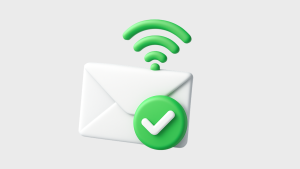Email validation plays a critical role in maintaining a healthy marketing database and ensuring messages reach real inboxes. Yet, many teams often wonder — should they use real-time email validation or batch validation?
This guide covers:
- The key differences between real-time and batch (bulk) email validation.
- When to use each method.
- How both methods complement each other.
- How validation improves deliverability, reputation, and ROI.
- Tips for managing CRMs, forms, and email campaigns.
What is Email Validation?
Email validation is the process of verifying whether an email address is accurate, active, and safe to send messages to. This involves multiple checks such as:
- Syntax validation: Ensuring proper format (e.g., no typos or missing “@”).
- Domain verification: Checking if the email domain (like gmail.com) exists.
- Mailbox verification: Testing whether the mailbox is active and can receive messages.
- Disposable and spam email detection: Filtering out temporary or risky emails.
Accurate validation protects your sender reputation, reduces bounce rates, and improves data accuracy across your CRM and marketing tools.
👉 Read to know more : whats is email validation
Real-Time Email Validation: Accuracy at the Point of Entry
Real-time email validation works instantly during data collection — such as when users fill out sign-up forms, landing pages, or checkout pages.
Key Benefits:
- Instant feedback: Detects typos, fake, or disposable emails before submission.
- Improved user experience (UX): Prevents user frustration with failed confirmations.
- Higher data quality: Ensures every entry added to your CRM or mailing list is valid.
- Reduced bounce rate: Keeps invalid emails out of your campaigns from the start.
When to Use Real-Time Validation:
- On lead capture forms, newsletter subscriptions, and trial sign-ups.
- For SaaS onboarding and user registration flows.
- Whenever you want to prevent invalid emails before they enter your database.
👉 Related Post: Real-Time Email Verification: How to Validate Email Addresses Instantly
Batch Email Validation: Cleaning Large Lists Efficiently
Batch (or bulk) email validation processes thousands of email addresses at once — perfect for marketing databases, CRM exports, or re-engagement campaigns.
Key Benefits:
- Time efficiency: Validate massive lists via CSV or JSON uploads.
- Cost-effectiveness: Identify inactive or outdated contacts before mailing.
- Database hygiene: Remove duplicates, bounced, and disposable addresses.
- Better segmentation: Keep customer data accurate for personalized outreach.
When to Use Batch Validation:
- Before launching large email marketing campaigns.
- For CRM maintenance and regular data audits.
- When re-engaging old subscribers or cleaning legacy databases.
Real-Time vs Batch Email Validation: Core Differences
| Feature | Real-Time Validation | Batch Validation |
|---|---|---|
| Timing | Instant, during data entry | Periodic, post-collection |
| Use Case | Sign-up forms, CRM integrations | Database cleaning, campaign prep |
| Goal | Prevent bad data from entering | Remove bad data from existing lists |
| Scale | One email at a time | Thousands at once |
| Integration | Web forms, CRMs, APIs | File uploads, scheduled jobs |
| Benefit | Immediate accuracy | Scalable list hygiene |
Both methods are complementary — real-time validation stops bad emails at the source, while batch validation ensures ongoing database quality. Using both together offers the most robust protection for your sender reputation.
How Email Validation Impacts Deliverability and ROI
- Improves email deliverability: Valid emails reach real inboxes more consistently.
- Reduces bounce rates: Fewer hard bounces protect your sender domain from blacklisting.
- Enhances campaign ROI: Every message reaches a verified, active recipient.
- Maintains compliance: Helps meet email marketing regulations like CAN-SPAM and GDPR.
- Optimizes CRM performance: Cleaner databases save on storage and automation costs.
Bonus Content : why-is-email-validation-so-important-for-email-marketing-experts
Integrating Validation with APIs and CRMs
Modern email validation tools offer Email validation API For integration, allowing developers to connect validation processes directly with web applications, forms, or CRMs.
- Real-time APIs verify emails as users type.
- Batch APIs automate bulk verification through scheduled uploads.
- Webhooks can notify systems when verification is complete.
This automation reduces manual work, keeps marketing data fresh, and improves accuracy across systems.
Learn More : How to inegrate an email validation API
When to Use Both for Maximum Results
Using real-time validation at the data entry level and batch validation for regular database cleaning creates a complete verification strategy.
- Start with real-time verification to ensure every new contact is valid.
- Run batch validation monthly or quarterly to maintain clean email lists.
- This dual approach prevents deliverability issues, maintains engagement rates, and maximizes ROI from every email campaign.
Final Thoughts
Whether you validate emails in real-time or in bulk, both approaches serve distinct yet vital roles in maintaining a clean, accurate, and deliverable email database.
By combining both, businesses can safeguard their sender reputation, reduce costs associated with bounces, and ensure every marketing effort reaches its intended audience effectively.
You might also like

The Ultimate Email Validation Checklist for Marketers
This ultimate checklist helps marketers master email validation—ensuring higher deliverability, fewer bounces, and smarter campaigns. Stay ahead of spam filters and meet rising audience expectations with every send. Clean lists, better results.

Master Email Deliverability with Proper Email Authentication
Master email deliverability by implementing proper email authentication protocols like SPF, DKIM, and DMARC. These tools not only protect your domain but also ensure your emails reach inboxes—safely and reliably.

The Cold Email Hack You’re Missing: Catch-All Email Validation Explained!
Tired of cold emails going nowhere? Don’t let invalid addresses ruin your outreach efforts. Discover how catch-all email validation can protect your brand’s reputation, reduce bounce rates, and boost deliverability. Learn how to identify risky email domains, filter spam, and optimize your email campaigns with smarter validation—before you hit send. Real lessons, real impact—see how digital marketers are winning with catch-all email verification.






 No credit card required
No credit card required


Post your Comment.